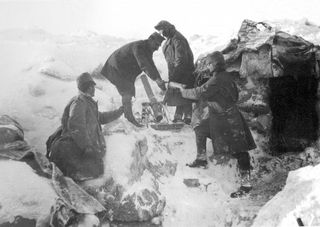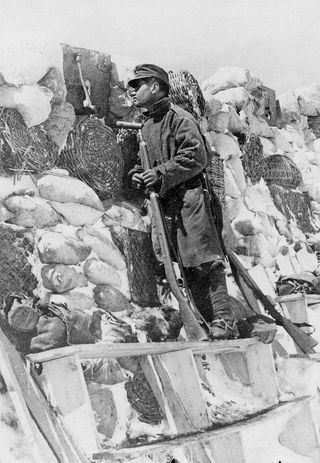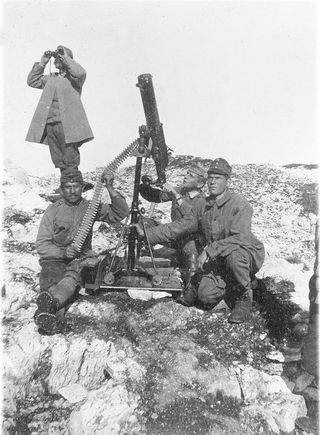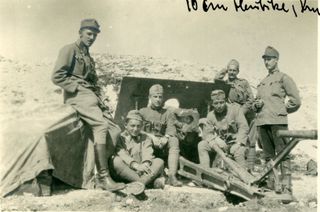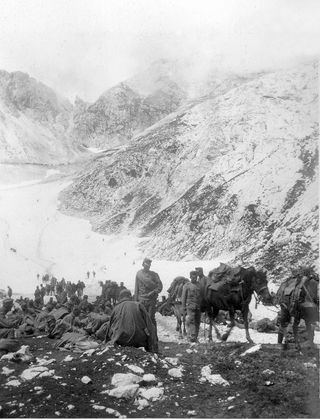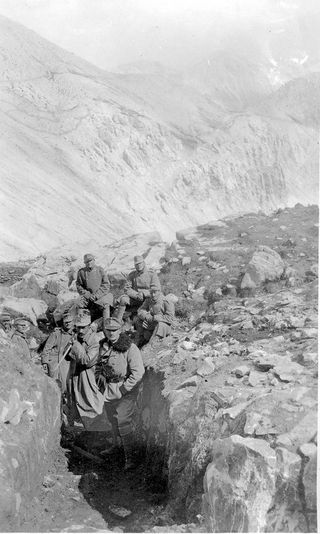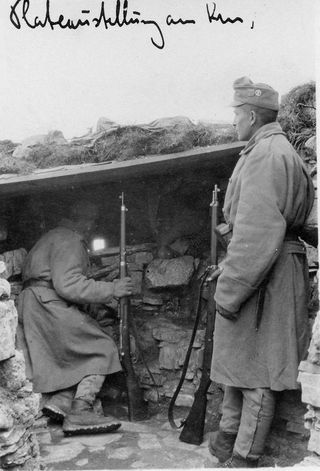Austro-Hungarian Army in the Upper Soča Region, II - 25. 5. 1915 - 23. 10. 1917
19.10.2019 - 15.10.2020On the tour through the battlefields of the Upper Soča Region in the yearlong thematic exhibitions we stopped two years ago in the Austro-Hungarian rear of Mt. Batognica battlefield. The reason was to commemorate the Battle of Kobarid on the centenary of the event, and finally also the exhibition "The Neighbour's Story" – the account of Josef Pailer, an officer of Graz, who experienced, and survived, the two world wars.
This year’s exhibition continues the tour through the trenches and the rear of the Austro-Hungarian army high up in the mountains, in Mt. Krn range. This time the visitors will be guided by an excellent guide, a neighbour from Zagreb. Artillery cadet trainee Ivo Brlić, a young student of law, dully met the expectations of his mother and regularly described in detail his experience of the battlefield. His writings exceed usual diary entries – naturally, since his mother, Ivana Brlić-Mažuranić, was the best known Croatian woman writer and was several times nominated for the Nobel Prize in Literature. Brlić spent most of his military duty at observation posts of his battery, but, being curious, he also visited caves and trenches of the infantry all the way to the southern edge of the mountain range, the Sleme alpine pasture.
At this point this year’s battlefield tour ends. From here on the floor is given to Ivan Volarič, a local of Sužid. Like our forefathers, he could watch from the mountains his native place occupied by the Italian army and he wondered how his family was living going through the wartime.
A more detailed chronology of numerous battles and an insight into the organization of troops in the battlefield and in the rear are explained to visitors by museum guides and books in the museum’s offer; yet, more valuable for the museum narrative prove to be the accounts by those who took part in the war and that are communicated to us by the visitors. It is particularly true of the third section of this "tour": the exhibition that will in the following years stop on the even bloodier mountain, Mt. Mrzli Vrh, and continue down to the River Soča, the Tolmin bridgehead. Most of the Austro-Hungarian troops that fought on this part of the battlefield had come from faraway lands of the Dual Monarchy, but after almost three decades of the Museum’s operation we still have not learned about their stories.
It is no coincidence that the final words of the exhibition read like this:
"Far Away from Home!"

